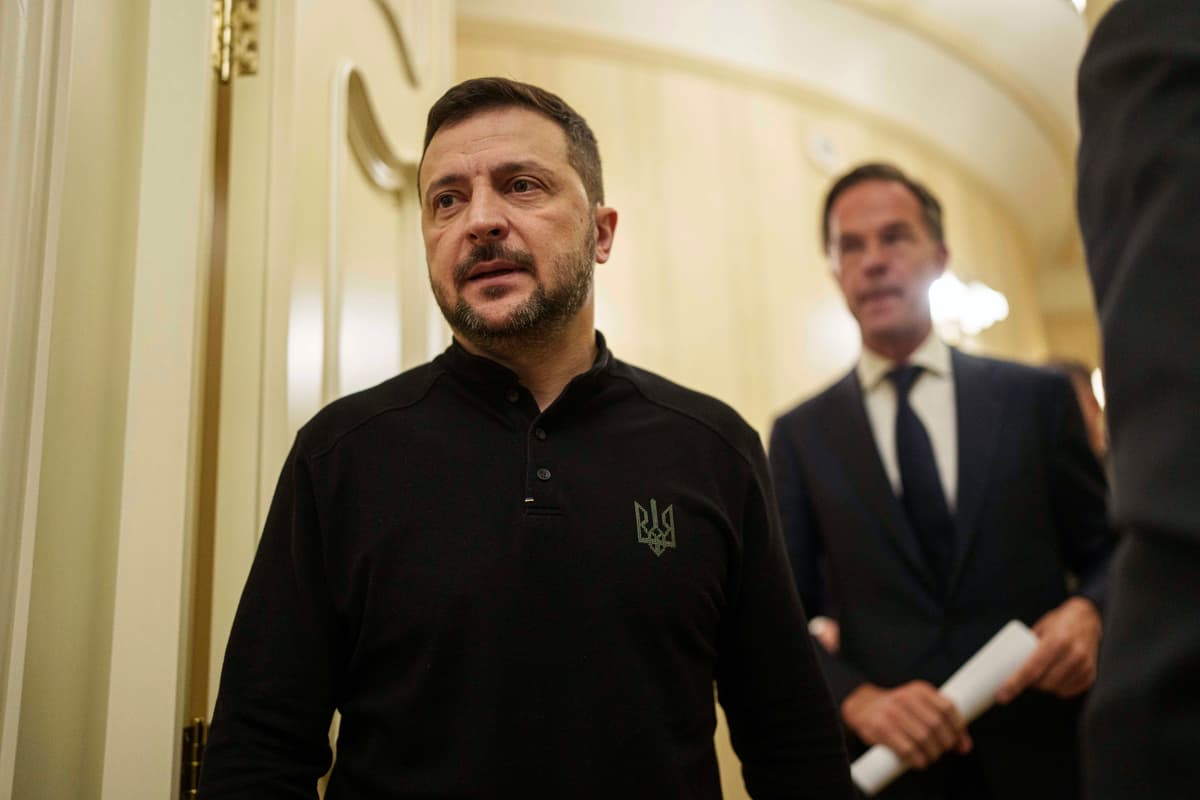Zelensky to Present ‘Victory Plan’ to Allies in Germany
The plan may signal the beginning of the end of the war — but the German foreign minister hints war could enter a deadly new phase.

BERLIN — President Zelensky of Ukraine will unveil his victory plan this weekend at a meeting of Ukraine’s allies at Ramstein Air Force Base in Germany.
Embattled on several fronts, Mr. Zelensky’s plan could signal the beginning of the end of the war. It may also be a harbinger of a new, unrestricted phase of intensified strikes deep inside the Russian homeland.
Mr. Zelensky wrote on his Telegram channel that he is “preparing for the 25th Ramstein meeting on October 12, which will be the first to take place at the leaders’ level.”
Mr. Zelensky added that he and his team “will present the victory plan, clear, specific steps for a just end to the war.”
Although the details of Mr. Zelensky’s proposal have not been made public, he and his team have reportedly previewed the plan to both American presidential candidates and President Biden.
If Mr. Zelensky’s plan raises peace negotiations, an anticipated sticking point will likely be over territorial concessions. Ukraine has repeatedly signaled its intentions to liberate all of Ukraine occupied by Russia since 2014.
And while Ukraine still maintains a desire to liberate Crimea and all of the eastern Donbas region, Kyiv’s defensive campaign in the east appears to be slowly crumbling.
Vuhledar, a front-line town in Donbas, recently fell to Russian forces after a grinding, years-long campaign that cost hundreds of pieces of Russian military equipment and thousands of Russian soldiers.
The August invasion of Russia’s Kursk region by Ukraine marked the first time since World War II that foreign forces occupied a part of Russia and seems to have been intended to open another front in the war to draw Moscow’s troops away from Donbas.
But with Russian forces seemingly poised to take over other contested areas in Donbas, the wisdom of the Kursk invasion has been called into question, as has the ultimate viability of that Ukrainian toe-hold in enemy territory.
Another point sure to be brought up between Ukraine and the allied nations is Kyiv’s increasingly deadly strike campaign against targets of military and logistic value inside Russia itself.
Ukraine has struck several large fuel depots and ammunition dumps in recent weeks using long-range strike drones, including a strike against an oil depot in Russian-occupied Crimea.
Although many of these aerial munitions have been built and designed in Ukraine, Kyiv has repeatedly asked Western allies for permission to use Western-supplied weapons against high-value Russian targets.
The United States, France, and the United Kingdom have supplied Ukraine with long-range strike munitions. Germany, however, has demurred and cited a desire — in the words of the German chancellor — not to escalate the conflict.
On Sunday, the German foreign minister, Annalena Baerbock, opened the door to changing that policy during an interview with ARD, a German public broadcaster, in what would be an abrupt break from previous government policy.
Mrs. Baerbock did not rule out allowing Ukraine to attack military facilities in Russia with German weapons in self-defense. However, she refused to discuss how deep into Russian territory Germany would theoretically allow Ukrainian strikes.
Ukraine doesn’t have to strike back only when its territory is already under attack, Mrs. Baerbock said. “Ukraine’s right to self-defense does not mean that a missile must first cross the border or hit a city like Kharkiv before it is allowed to defend itself.”
Mrs. Baerbock, a member of Germany’s Greens, has repeatedly voiced her support for Ukraine’s right to defend its territory with all means necessary. Her staunch support has, at times, toed the official government line.
She emphasized that preventive measures are needed to prevent future attacks, and said that “even the best air defense cannot always prevent this.”
With regard to possible attacks on Russian soil, Baerbock said: “It is not a ‘no’ that launch pads [inside Russia] must not be destroyed.” She added, “the question is how far” inside Russia hypothetical strikes would go.
When pressed, the minister pushed back against elaborating specific distances such as “10, 40 or 200 kilometers.”
Mrs. Baerbock cited a desire to ensure an effective deterrent strategy for declining to say outright how far strikes inside of Russia by Ukraine with German weaponry would be allowed.
While Ukraine’s strike campaign has repeatedly caught Russian forces unawares, Kyiv has not been provided with one of the deadliest non-nuclear weapons in Western inventories: Germany’s Taurus cruise missile.
A product of late Cold War planning, the long-range munition was intended to strike high-value military targets deep behind Soviet lines if that conflict turned hot.
While the United States, France, and the United Kingdom have supplied Ukrainian forces with similar weaponry, the Taurus is prized for its more extended range, a GPS-independent terrain mapping guidance system, and a sophisticated warhead that can engage a wide range of target sets.
And while Germany is the number two provider of military aid to Ukraine behind the United States, Berlin has rebuffed repeated Ukrainian requests for Taurus cruise missiles.
News from Berlin about a definitive change in German policy about allowing strikes in Russia with German weaponry or of an about-face on the Taurus cruise missile has yet to materialize.
A change in Berlin’s policy toward Ukraine may be on the horizon. For now, however, Ukrainian defenders hunker down and wait.

